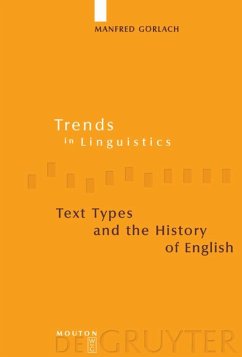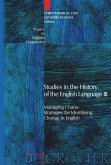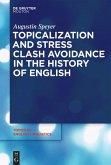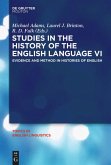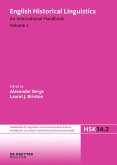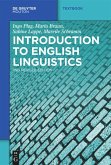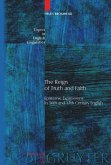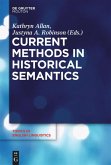The book comprises methodological reflexions on form, content and function in a comprehensive description of text types/genres. These considerations are then exemplified in detail by analyses of individual types such as cooking recipes, book dedications, advertisements, jokes, and church hymns. The transfer of types and the range of existing types are described for Scotland and for India. The description is completed by a summary list of some 2100 text types with definitions and their documentation in the history of English.
The history of modern European languages has been largely determined by the range of functions they have acquired, particularly after 1500. This development necessitated a notable expansion of their syntax and lexis, but is most characteristically reflected in the conventionalization of text types.
Starting from the German concept of Textsorte as developed from the 1960s onwards, the present account is a first comprehensive attempt at charting the field for the history and present-day situation of the English language. In text types, a designation is linked with a more or less stable form which guides the writer's production as well as the reader's expectation, permitting one to recognize straightforward uses as well as deliberate misuses. Some two thousand of such designations are here listed with minimal definitions and dates for first occurrences. The discussion then concentrates on selected types, which are seen as especially illustrative for English: book dedications, cooking recipes, advertisements, church hymns, lexical entries, and jokes. Their functions and development over time are treated in correlation with their specific linguistic characteristics and adaptations to different period styles and social changes in the readership. The functional range of text types in traditions outside England and the consequences of the export of English categories are exemplified by the history of Scots/Scottish English and of English in India. The arguments are accompanied by a lavish supply of textual excerpts and more than fifty pages of facsimiles, which are especially relevant for insights derived from typographical features. A full bibliography and indices are provided at the end.
The book will prove useful for decisions on the constitution of representative text corpora and stimulate research into a greater number of individual text types as well as contrastive analyses at least among European languages.
The history of modern European languages has been largely determined by the range of functions they have acquired, particularly after 1500. This development necessitated a notable expansion of their syntax and lexis, but is most characteristically reflected in the conventionalization of text types.
Starting from the German concept of Textsorte as developed from the 1960s onwards, the present account is a first comprehensive attempt at charting the field for the history and present-day situation of the English language. In text types, a designation is linked with a more or less stable form which guides the writer's production as well as the reader's expectation, permitting one to recognize straightforward uses as well as deliberate misuses. Some two thousand of such designations are here listed with minimal definitions and dates for first occurrences. The discussion then concentrates on selected types, which are seen as especially illustrative for English: book dedications, cooking recipes, advertisements, church hymns, lexical entries, and jokes. Their functions and development over time are treated in correlation with their specific linguistic characteristics and adaptations to different period styles and social changes in the readership. The functional range of text types in traditions outside England and the consequences of the export of English categories are exemplified by the history of Scots/Scottish English and of English in India. The arguments are accompanied by a lavish supply of textual excerpts and more than fifty pages of facsimiles, which are especially relevant for insights derived from typographical features. A full bibliography and indices are provided at the end.
The book will prove useful for decisions on the constitution of representative text corpora and stimulate research into a greater number of individual text types as well as contrastive analyses at least among European languages.

